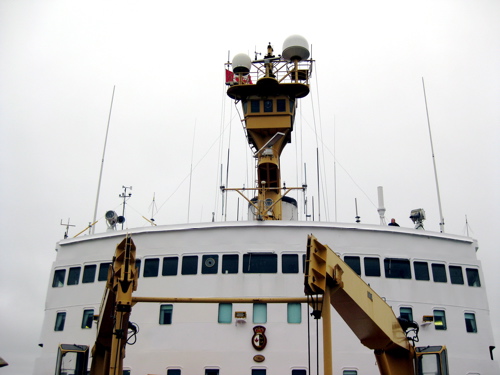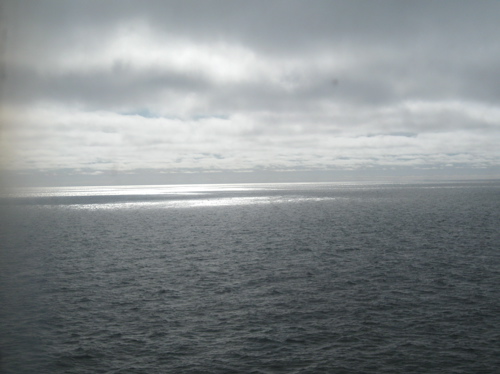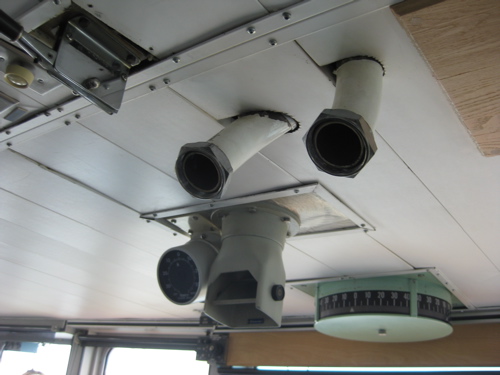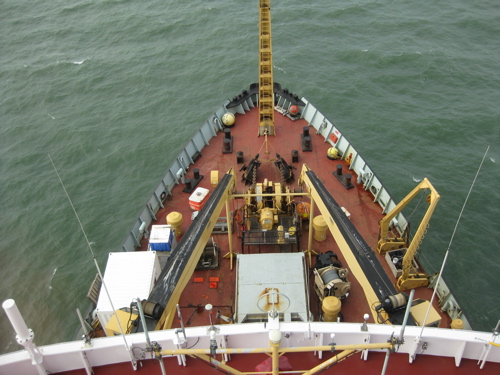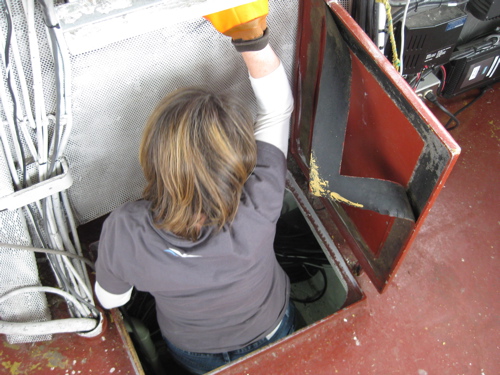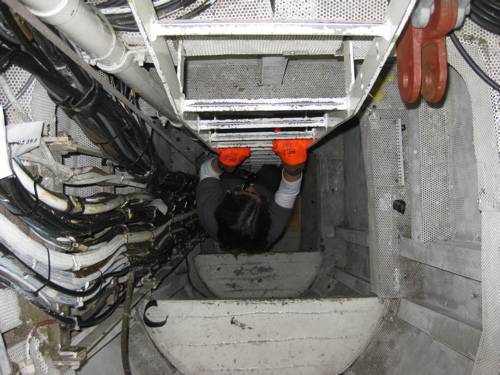Gerty WardAugust 16, 2008We are currently anchored at 69.50N, 133.12W waiting for a fuel barge. It is calm with broken clouds, a perfect time to go up top to the Crows Nest. Before electronics, ship navigation was done by sight. One person stayed up in the crow's nest, a platform or barrel attached to the main mast, to keep watch. In rough seas, the Crow's Nest moves quite a bit. Think of a pendulum-- the ship is the base and the Crow's Nest is the bob, moving back and forth, back and forth. In rough weather, this swing can be really severe, up to 90 degrees (45 degrees off each side of the vertical) as well as front-to-back movement.
Hazards such as ice and other ships were best spotted from here. Before radio, the watch keeper used hand signals, or just yelled. The invention of the speaking tube improved communications. Under especially hazardous sailing conditions, a bow watch was also ordered. During rough seas, this was very cold and wet duty that lasted hours and hours. It is interesting to note how much the human eye was relied upon for navigation.
Now all ship navigation is done by radar and satellite. Visibility extends more than 240 miles. Maps have details of most known hazards. The ship even has an auto-pilot! The climb up to the Crow's Nest is now just to maintain the radar equipment located on top, and for a taste of old times.
Last updated: October 7, 2019 | |||||||||||||||||||||||||||||
Copyright ©2007 Woods Hole Oceanographic Institution, All Rights Reserved, Privacy Policy. | |||||||||||||||||||||||||||||


